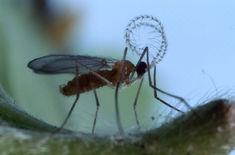
Apple trees and aphids have proven key to a new study, as scientists look to discern why leaves change from green to red in the autumn.
New research, by evolutionary biologist Marco Archetti of Harvard University, began when he noticed that red leaves are more common in wild apple trees than in ones grown for fruit.
The leaf’s red pigment helps to ward off insects from the leaves, suggesting that the tree is not ideal for dining or nesting, claims Archetti, but some scientists have said the red pigment defends leaves, against sun damage - which is a potent threat in autumnal weather.
The research suggests that cross-breeding by farmers over hundreds of years has caused apple trees to lose their cautionary autumn colours as growers look for the largest and best-tasting fruit as opposed to the most pest-resistant.
The study found that 62.2 per cent of central Asian wild apple trees have leaves that turn red in the autumn, compared with just 2.8 per cent for cultivated British apple trees, Archetti reported in the Proceedings of the Royal Society B Research Journal.
Archetti placed nesting aphids in red-leaved and green-leaved apple trees - the following spring, 60 per cent of aphids nesting in green trees had survived, compared with only 29 per cent of those in the red trees.
This study, along with others conducted into the phenomenon, suggests that the red leaves either hold fewer nutrients for young aphids or have toxic chemical defences.



